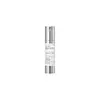What's inside
What's inside
 Key Ingredients
Key Ingredients

 Benefits
Benefits

 Concerns
Concerns

 Ingredients Side-by-side
Ingredients Side-by-side

Water
Skin ConditioningAlcohol Denat.
AntimicrobialGlycolic Acid 15%
BufferingNiacinamide 5%
SmoothingPropylene Glycol
HumectantSalicylic Acid 2%
MaskingAmmonium Hydroxide
BufferingPolyquaternium-10
Retinol
Skin ConditioningHydroxypinacolone Retinoate
Skin ConditioningOligopeptide-10
AntimicrobialOryza Sativa Bran Extract
Skin ConditioningBoswellia Serrata Extract
Skin ConditioningHoney Extract
HumectantButylene Glycol
HumectantEthylhexylglycerin
Skin ConditioningTetrasodium EDTA
Pentylene Glycol
Skin ConditioningPalmitoyl Hydroxypropyltrimonium Amylopectin/Glycerin Crosspolymer
Skin ConditioningDimethyl Isosorbide
Solvent1,2-Hexanediol
Skin ConditioningPolysorbate 20
EmulsifyingCaprylyl Glycol
EmollientHydrogenated Lecithin
EmulsifyingBHT
AntioxidantBHA
AntioxidantWater, Alcohol Denat., Glycolic Acid 15%, Niacinamide 5%, Propylene Glycol, Salicylic Acid 2%, Ammonium Hydroxide, Polyquaternium-10, Retinol, Hydroxypinacolone Retinoate, Oligopeptide-10, Oryza Sativa Bran Extract, Boswellia Serrata Extract, Honey Extract, Butylene Glycol, Ethylhexylglycerin, Tetrasodium EDTA, Pentylene Glycol, Palmitoyl Hydroxypropyltrimonium Amylopectin/Glycerin Crosspolymer, Dimethyl Isosorbide, 1,2-Hexanediol, Polysorbate 20, Caprylyl Glycol, Hydrogenated Lecithin, BHT, BHA
Water
Skin ConditioningDipropylene Glycol
HumectantGlycerin
HumectantNiacinamide
SmoothingButylene Glycol
HumectantMacadamia Ternifolia Seed Oil
Emollient1,2-Hexanediol
Skin ConditioningEthylhexyl Palmitate
EmollientSodium Acrylate/Sodium Acryloyldimethyl Taurate Copolymer
Emulsion StabilisingPolyisobutene
Hydrolyzed Sponge
Skin ConditioningGlycereth-26
HumectantEthylhexylglycerin
Skin ConditioningCaprylyl Glycol
EmollientAdenosine
Skin ConditioningSodium Polyacrylate
AbsorbentSodium Hyaluronate
HumectantCentella Asiatica Extract
CleansingCaprylyl/Capryl Glucoside
CleansingSorbitan Oleate
EmulsifyingXanthan Gum
EmulsifyingPropolis Extract
Skin ConditioningAsiaticoside
AntioxidantMadecassoside
AntioxidantMadecassic Acid
Skin ConditioningAsiatic Acid
Skin ConditioningGlycine
BufferingSerine
MaskingGlutamic Acid
HumectantAspartic Acid
MaskingLeucine
Skin ConditioningAlanine
MaskingLysine
Skin ConditioningArginine
MaskingTyrosine
MaskingPhenylalanine
MaskingThreonine
Proline
Skin ConditioningValine
MaskingIsoleucine
Skin ConditioningHistidine
HumectantMethionine
Skin ConditioningCysteine
AntioxidantWater, Dipropylene Glycol, Glycerin, Niacinamide, Butylene Glycol, Macadamia Ternifolia Seed Oil, 1,2-Hexanediol, Ethylhexyl Palmitate, Sodium Acrylate/Sodium Acryloyldimethyl Taurate Copolymer, Polyisobutene, Hydrolyzed Sponge, Glycereth-26, Ethylhexylglycerin, Caprylyl Glycol, Adenosine, Sodium Polyacrylate, Sodium Hyaluronate, Centella Asiatica Extract, Caprylyl/Capryl Glucoside, Sorbitan Oleate, Xanthan Gum, Propolis Extract, Asiaticoside, Madecassoside, Madecassic Acid, Asiatic Acid, Glycine, Serine, Glutamic Acid, Aspartic Acid, Leucine, Alanine, Lysine, Arginine, Tyrosine, Phenylalanine, Threonine, Proline, Valine, Isoleucine, Histidine, Methionine, Cysteine
 Reviews
Reviews

Ingredients Explained
These ingredients are found in both products.
Ingredients higher up in an ingredient list are typically present in a larger amount.
1,2-Hexanediol is a synthetic liquid and another multi-functional powerhouse.
It is a:
- Humectant, drawing moisture into the skin
- Emollient, helping to soften skin
- Solvent, dispersing and stabilizing formulas
- Preservative booster, enhancing the antimicrobial activity of other preservatives
Butylene Glycol (or BG) is used within cosmetic products for a few different reasons:
Overall, Butylene Glycol is a safe and well-rounded ingredient that works well with other ingredients.
Though this ingredient works well with most skin types, some people with sensitive skin may experience a reaction such as allergic rashes, closed comedones, or itchiness.
Learn more about Butylene GlycolCaprylyl Glycol is a humectant and emollient, meaning it attracts and preserves moisture.
It is a common ingredient in many products, especially those designed to hydrate skin. The primary benefits are retaining moisture, skin softening, and promoting a healthy skin barrier.
Though Caprylyl Glycol is an alcohol derived from fatty acids, it is not the kind that can dry out skin.
This ingredient is also used as a preservative to extend the life of products. It has slight antimicrobial properties.
Learn more about Caprylyl GlycolEthylhexylglycerin (we can't pronounce this either) is commonly used as a preservative and skin softener. It is derived from glyceryl.
You might see Ethylhexylglycerin often paired with other preservatives such as phenoxyethanol. Ethylhexylglycerin has been found to increase the effectiveness of these other preservatives.
Niacinamide is a multitasking form of vitamin B3 that strengthens the skin barrier, reduces pores and dark spots, regulates oil, and improves signs of aging.
And the best part? It's gentle and well-tolerated by most skin types, including sensitive and reactive skin.
You might have heard of "niacin flush", or the reddening of skin that causes itchiness. Niacinamide has not been found to cause this.
In very rare cases, some individuals may not be able to tolerate niacinamide at all or experience an allergic reaction to it.
If you are experiencing flaking, irritation, and dryness with this ingredient, be sure to double check all your products as this ingredient can be found in all categories of skincare.
When incorporating niacinamide into your routine, look out for concentration amounts. Typically, 5% niacinamide provides benefits such as fading dark spots. However, if you have sensitive skin, it is better to begin with a smaller concentration.
When you apply niacinamide to your skin, your body converts it into nicotinamide adenine dinucleotide (NAD). NAD is an essential coenzyme that is already found in your cells as "fuel" and powers countless biological processes.
In your skin, NAD helps repair cell damage, produce new healthy cells, support collagen production, strengthen the skin barrier, and fight environmental stressors (like UV and pollution).
Our natural NAD levels start to decline with age, leading to slower skin repair, visible aging, and a weaker skin barrier. By providing your skin niacinamide, you're recharging your skin's NAD levels. This leads to stronger, healthier, and younger looking skin.
Another name for vitamin B3 is nicotinamide. This vitamin is water-soluble and our bodies don't store it. We obtain Vitamin B3 from either food or skincare. Meat, fish, wheat, yeast, and leafy greens contain vitamin B3.
The type of niacinamide used in skincare is synthetically created.
Learn more about NiacinamideWater. It's the most common cosmetic ingredient of all. You'll usually see it at the top of ingredient lists, meaning that it makes up the largest part of the product.
So why is it so popular? Water most often acts as a solvent - this means that it helps dissolve other ingredients into the formulation.
You'll also recognize water as that liquid we all need to stay alive. If you see this, drink a glass of water. Stay hydrated!
Learn more about Water